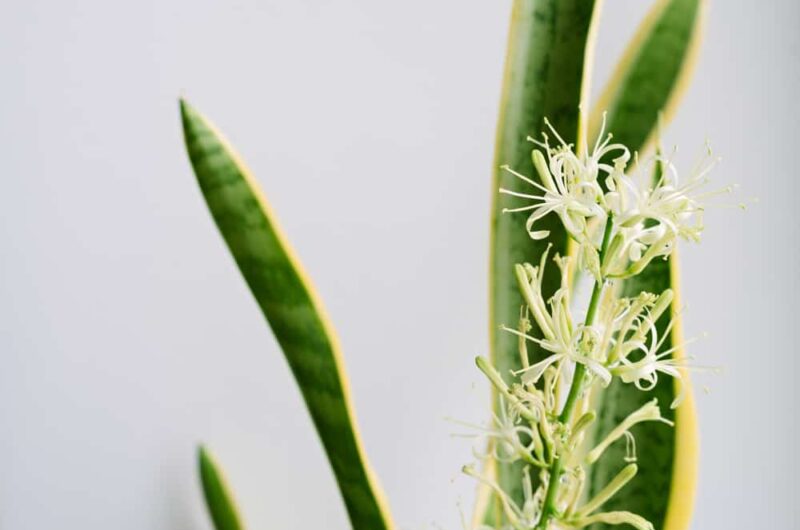Snake plants, also known as Sansevieria or mother-in-law’s tongue, are popular houseplants known for their hardy nature and striking foliage. However, it is relatively rare for snake plants to produce flowers when grown indoors. Flowering typically occurs under specific conditions, and it may take several years for a snake plant to reach maturity and bloom.
When a snake plant does flower, the blooms are small and typically appear on long stalks that emerge from the center of the plant. The flowers are tubular in shape and usually white or pale green in color. They may have a pleasant fragrance that is more noticeable during the evening hours.
The flowering of a snake plant is often triggered by environmental factors, such as exposure to bright light, a period of cooler temperatures, or a change in the plant’s growing conditions. However, even with the right conditions, it’s not guaranteed that all snake plants will produce flowers.
If you are interested in encouraging your snake plant to flower, here are a few tips:
- Provide Adequate Light: Snake plants prefer bright, indirect light. Place your plant near a window where it can receive several hours of bright, filtered sunlight each day. This can help promote flowering.
- Temperature and Humidity: Snake plants prefer moderate temperatures ranging between 60°F to 85°F (15°C to 29°C). Cooler temperatures, especially at night, can sometimes trigger flowering. Maintaining a moderate level of humidity can also be beneficial.
- Avoid Overwatering: Snake plants are drought-tolerant and prefer well-draining soil. Overwatering can lead to root rot, which may inhibit flower production. Allow the soil to dry out partially between waterings.
- Patience: Snake plants are known for their slow growth, and it can take several years for them to reach maturity and produce flowers. Be patient and provide consistent care to encourage blooming.

Remember that while it’s exciting to see a snake plant flower, the primary appeal of these plants lies in their attractive foliage. Even if your snake plant doesn’t produce flowers, it can still thrive and enhance the aesthetics of your indoor space.

